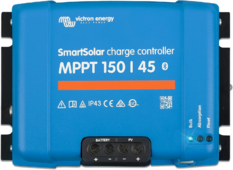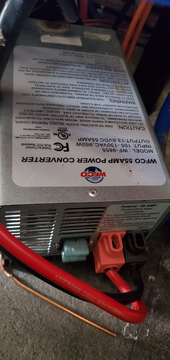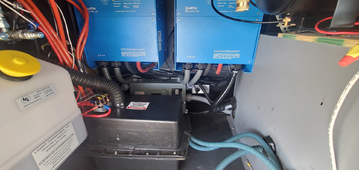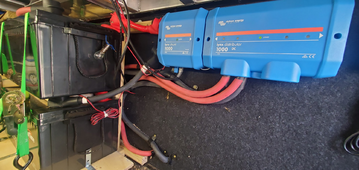I think there may be some confusion with what my particular setup is in this thread, and what I am doing, so I took some pictures.
I am fulltime in a 5th wheel camper.
The batteries and Lynx Shunt + Lynx Distributor are LiFePO4 300ah at 48vdc+-. These are in a heated bay
The grey box is the stock converter that I will be removing.
The black box with a black hose out the top is a 12v deep cycle FLA marine/RV battery. This bay with the Quattros is exposed to the outside, i.e. -40f to 120f
I will be installing this new MPPT right next to the 12v battery. Two 3ft+- 6awg from 12v battery to "Battery" connection on the MPPT. Running two 10ft+- 6awg wires from the lynx distributor to the "PV" on the MPPT.




I am fulltime in a 5th wheel camper.
The batteries and Lynx Shunt + Lynx Distributor are LiFePO4 300ah at 48vdc+-. These are in a heated bay
The grey box is the stock converter that I will be removing.
The black box with a black hose out the top is a 12v deep cycle FLA marine/RV battery. This bay with the Quattros is exposed to the outside, i.e. -40f to 120f
I will be installing this new MPPT right next to the 12v battery. Two 3ft+- 6awg from 12v battery to "Battery" connection on the MPPT. Running two 10ft+- 6awg wires from the lynx distributor to the "PV" on the MPPT.







